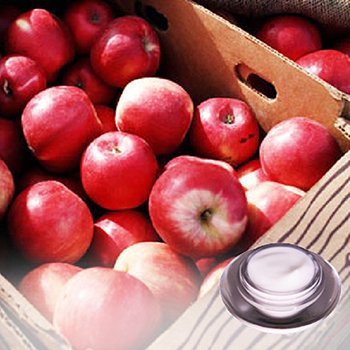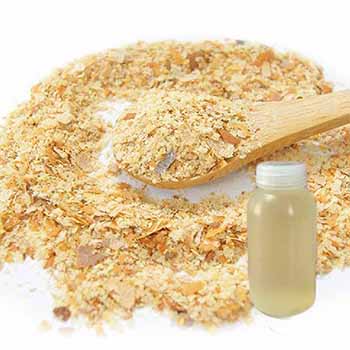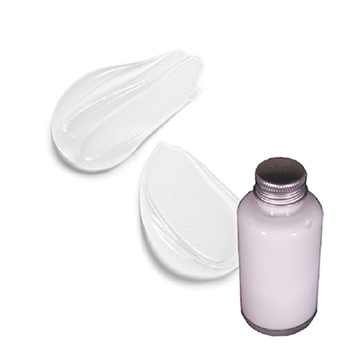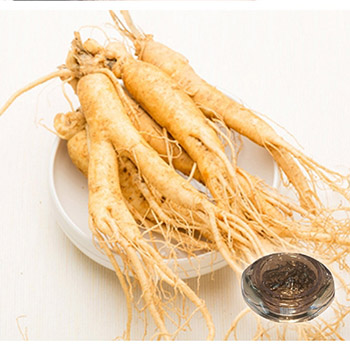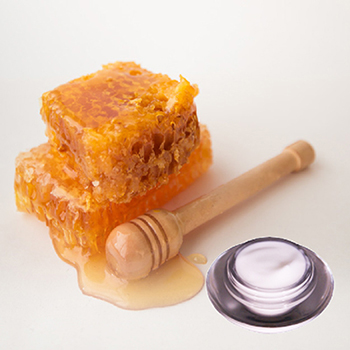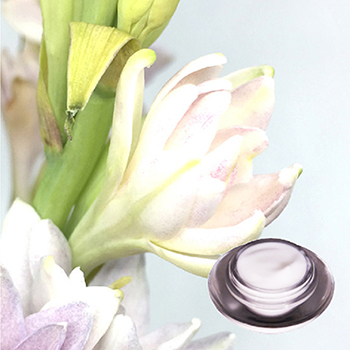目前購物車內沒有商品
Supplement Forms / Alternate Names:
• Bromelain; Papain; Trypsin; Chymotrypsin; Pancreatin; Digestive Enzymes
Abstract:
Bromelain is not actually a single substance, but rather a collection of protein-digesting enzymes (also called proteolytic enzymes) found in pineapple juice and in the stem of pineapple plants.
First introduced as a therapeutic compound in 1957, bromelain's actions include: (1) inhibition of platelet aggregation; (2) fibrinolytic activity; (3) anti-inflammatory action; (4) anti-tumor action; (5) modulation of cytokines and immunity; (6) skin debridement properties; (7) enhanced absorption of other drugs; (8) mucolytic properties; (9) digestive assistance; (10) enhanced wound healing; and (11) cardiovascular and circulatory improvement. Bromelain is well absorbed orally and available evidence indicates that it's therapeutic effects are enhanced with higher doses. Although all of its mechanisms of action are still not completely resolved, it has been demonstrated to be a safe and effective supplement.
Description:
Bromelain is the proteolytic enzyme from juice wastes of pineapple stem and ripe or unripe fruits combined with solvents, such as acetone or methanol, or following filtration (Leung and Foster, 1996; Samuelsson, 1992; Schulz et al., 1998). For the past 25 years, proteolytic enzymes that contain chemically active thiol groups that can tenderize meat have been used by the food industry (Samuelsson, 1992). Other enzymes such as papain, derived from papaya latex (Carica papaya), and ficin, from fig latex (Ficus species), also contain thiol groups. Other uses of proteolytic enzymes include animal skin preparation, fish oil production, soap manufacture, and cloth shrinkage (Leung and Foster, 1996).
Pineapple has been used as a medicinal plant in several native cultures and bromelain has been known chemically since 1876. In 1957, bromelain was introduced as a therapeutic compound when Heinicke found it in high concentrations in pineapple stems.
Bromelain is a general name for a family of sulfhydryl proteolytic enzymes obtained from Ananas comosus, the pineapple plant. It is usually distinguished as either fruit bromelain or stem bromelain depending on its source, with all commercially available bromelain being derived from the stem.1 The term bromelain will be used to refer to stem bromelain in the remainder of this article.
Bromelain's primary component is a sulfhydryl proteolytic fraction. Bromelain also contains a peroxidase, acid phosphatase, several protease inhibitors, and organically bound calcium. When the proteolytic fraction of bromelain is purified and extracted, the result is a potent proteolytic enzyme in vitro; however, this component has been shown to be physiologically inactive in vivo for many of the conditions where bromelain has a beneficial effect.2 It appears that a great deal of the physiological activity of bromelain is not accounted for in its proteolytic fraction and it is likely that the beneficial effects of bromelain are due to multiple factors, not to one single factor that can be isolated.
To date, eight basic proteolytically active components have been detected in the stem. The two main components have been labeled F4 and F5. The proteinase considered to be the most active fraction has been designated as F9, which comprises about 2% of the total proteins. It is estimated that 50% of the proteins in F4 and F5 are glycosylated, whereas F9 was found to be unglycosylated. The optimal pH for the F4 and F5 fractions is between 4.0 and 4.5 and for F9 close to a neutral pH.3 The entire extract of bromelain has been shown to exhibit its activity over a pH range of 4.5 to 9.8.4
Since bromelain is derived from a natural source, different sources can exhibit variability in their physiological activity, even when their proteolytic activity is the same. Bromelain is not heat stable so it's physiological activity can be further reduced by improper processing or storage conditions.
In Europe, a patented tape that contains bromelain is used for debriding escharotic skin (Leung and Foster, 1996). Bromelain is also used to treat traumatic or post-surgical swelling; Commission E approves the use of bromelain to quell surgical swelling, particularly nasal sinus swelling. This approval, however, has been questioned by some scientists, who note that the Commission E's assessment involved five studies, three positive and two negative, leading to an equivocal proof of efficacy (Schulz et al., 1998).
In pharmacological tests, bromelain inhibits platelet aggregation, which explains, at least partially, its anti-inflammatory activity (Taussig and Batkin, 1988). Bromelain may also therapeutically influence fibrinolysis, tumor growth, drug absorption, blood coagulation and the debridement of third-degree burns (Taussig and Batkin, 1988). Another study demonstrated intestinal and antibacterial effects beneficial in the treatment of diarrhea (Mynott et al., 1997).
One obstacle to determining bromelain's therapeutic effects in humans is its bioavailability. Because the proteins contained in bromelain are usually broken down prior to absorption in the gastrointestinal tract, bromelain's active enzymes may not survive digestion. In rats, bromelain absorption rate is about 50%; other animal tests show that some undegraded protein winds up in lymph and the bloodstream (Schulz et al., 1998). Human rates are unknown, but one study using 19 healthy human males suggests that small amounts of undegraded bromelain may pass through the gastrointestinal tract intact (Castell et al., 1997).
The source of commercial bromelain tends to be the pineapple stem (Leung and Foster, 1996; Schulz et al., 1998); ripe fruits are sold as food products. Historically, the juice, fruit, and stem latex were used. In Hawaii, Japan, and Taiwan, folk medicine and contemporary descriptions of fruit latex report its use to cleanse and heal wounds and burns, to relieve digestive disturbances, and to treat some cancers (Taussig and Batkin, 1988).
Bromelain (EC 3.4.22.4) is the genuine mixture of bromelin A and B, the proteolytic enzymes of pineapple fruit, Ananas comosus (L.) Merrill [Fam. Bromeliaceae], in effective dosage.
The Pineapple Enzyme Bromelaine — "Wobenzyme" :
Cardiovascular plaque is comprised basically of two components. There is the mineral component that can be removed using EDTA as an Anionic Surfactant, and there is a fibrous component that some enzymes are able to disassemble.
For over 20 years, the American biochemist, Dr. Steven Taussig, of Honolulu, has been studying the biological effects of the enzyme mixture bromelaine. This enzyme complex — it consists of an entire group of distinct enzymes — is obtained from the middle third of the pineapple root. It can also be obtained from the green, unripe pineapple in large quantities. These bromelaines are able to degrade certain internal substances which may cause infarction (the so-called Prostaglandins E2 and thromboxane), thereby reducing the risk of cardiac infarction and the tendency to heart muscle necrosis, as well as simultaneously eliminating any heart pain. Also, Chinese researchers at the University of Iowa have shown that the supply of bromelaine can mobilize deposits in the blood vessels, and carry them off. Thus, by intensive, long-term therapy with bromelaine, it is possible to "clean out" the coronary arteries from the inside. From the biological point of view, this certainly is a much more intelligent therapy than a bypass operation. In the same manner, it is possible, by supplying larger, continuous doses of bromelaine, to dissolve deposits in the aorta and in leg arteries, as well as thrombosis residues, thus saving many a leg from amputation and even restoring them to normal functioning. The German enzyme preparation "Wobenzyme" is of particular effect in this "pipe cleaning."
The pineapple enzyme bromelaine (not bromelin!), which is absorbed into the bloodstream, can be used without limitation, is as effective eight years later as on the first day, dissolves already existing clots and cleans blood vessel walls, as well as the blood cells already mentioned. "Anavit F3" and "Ananase" are standardized bromelaine preparations. "Wobenzyme" also belongs in this group, even though it must be taken in higher doses. Magnesium, which can be bound to the membranes, such as magnesium aspartate, orotate and citrate, has a strong thrombosis-inhibiting effect. Orthodox medicine, as a rule, does not offer it. Wobenzyme is a very funny invention. It appears most desirable to have pancreatin absorbed into the blood stream since it rather specifically attacks cancer cells, as well as fibrin layers, clots and fresh thromboses.
Unfortunately, pancreatin is not resorbed. It will mainly stay in the intestine for the acknowledged purpose of digestion. Attempts to infuse pancreatin intravenously have largely failed because of poor tolerance and even shock. In contrast to animal-derived enzymes like pancreatin, plant-derived enzymes like bromelaine (from pineapple) are easily resorbed. If bromelaine and pancreatin are administered in a fixed combination, astonishingly, a part of the pancreatin will appear in the blood stream! A possible explanation for this is that the presence of one enzyme (the bromelaine) will neutralize the electrical properties of the other enzyme (pancreatin) and thus transiently do away with the blocking mechanism, which normally prevents the passage from the intestine into the blood.
The pineapple enzyme bromelaine is highly effective in the deactivation of antibodies and prostaglandin E-2 . Thus it is also no wonder that the bromelaine are unusually effective in the treatment of chronic rheumatism. Anavit F-3, and Ananase 100 and Wobenzyme are the names of these preparations. Already in the 18th century, the windjammer captains reported on the excellent antirheumatic-effect of the juice from the pineapple root and the green pineapple fruit. By the way, the juice from green, unripe pineapple is very effective abortifacient.

After the amino acid is synthesized, the "acid form" or pure amino acid is then reacted with any number of other elements, replacing one or more of the hydrogen atoms forming Mono–, Di–, Tri–, or Tetra Valent bonds with one or more atoms, hydroxyl ions, or other ion groups.

( Na2EDTA — Ethylenediaminetetraäcetic acid disodium salt C10H14N2O8Na2 )
Absorption and Availability:
Bromelain is absorbed intact through the gastrointestinal tract of animals, with up to 40% of the high molecular weight substances detected in the blood after oral administration. The highest concentration of bromelain is found in the blood 1 hour after administration; however, its proteolytic activity is rapidly deactivated, probably by the normal plasma protease controls and serum alpha2-macroglobulin.
A variety of designations have been used to indicate the activity of bromelain; with published research varying in the designation utilized. Rorer units (R.U.), gelatin dissolving units (G.D.U.), and milk clotting units (M.C.U.) are the most commonly used measures of activity. One gram of bromelain standardized to 2000 M.C.U. would be approximately equal to 1 gram with 1200 G.D.U. of activity or 8 grams with 100,000 R.U. of activity.
It is a proteolytic enzyme, one that decomposes protein in the body. One of its first noted benefits was as a digestant. This enzyme is effective not only in the acid present in the stomach, but also in the alkaline environment of the intestine. It is considered a substitute for the digestants pepsin and tryptin.
Bromelain's effectiveness is due to its ability to reduce the harmful prostaglandins in the body that cause pain and inflammation and block the absorption of nutrients through the tissues. By helping to inhibit these pro-inflammation.
Bromelain helps counteract histamine which is a factor in swelling and joint aches. Bromelain helps cells effectively shed fluids and fats. It aids healthy digestion by naturally breaking down fat from food without side effects. (Spectramin)
Immunity:
Bromelain has been shown to remove T-cell CD44 molecules from lymphocytes and to affect T-cell activation. The highly purified bromelain protease F9 was tested on the adhesion of peripheral blood lymphocytes (PBL) to human umbilical vein endothelial cells (HUVEC). Both bromelain and protease F9 reduced the expression of CD44, but F9 was about 10 times more active than bromelain; having about 97% inhibition of CD44 expression. The results indicate that F9 selectively decreases the CD44 mediated binding of PBL to HUVEC.
Antibiotics:
In a clinical study, the combination of bromelain and amoxicillin increased the levels of this antibiotic in the blood. Some studies suggest that bromelain may increase the body's ability to absorb tetracycline, but results of other studies have been conflicting. Until studies confirm these results, it would be wise to avoid combining bromelain and tetracycline.
Studies with bromelain and tetracycline have produced mixed results. Some research suggests that bromelain increases levels of tetracycline in the body, while others indicate that it may cause more of the antibiotic to be excreted in the urine.
Sinusitis and Bronchitis:
Bromelain has been shown helpful for upper respiratory tract infections such as Sinusitis and Bronchitis. Bromelain helps to reducing nasal inflammation and break up the mucus in the nasal, sinus and respiratory areas.
In the patients not receiving antibiotic treatment, 85% of patients receiving bromelain had complete resolution of inflammation of the nasal mucosa and complete resolution of breathing difficulties. Only 40% of the placebo group had a similar outcome with respect to inflammation, while 53% reported resolution of breathing difficulty.
Debridement:
Bromelain has no direct immune or antimicrobial effects. Instead, it acts to increase the effect of other immune cells by dissolving the mucous coat that bacteria use to "shield" themselves from the immune system. Some studies have shown it to be as effective as antibiotics for treatment of pneumonia, bronchitis, and dental, skin and kidney infection.
Bromelain applied topically as a cream (35% bromelain in a lipid base) can be beneficial in the elimination of burn debris and in acceleration of healing. A non-proteolytic component of bromelain is responsible for this effect. This component, referred to as escharase, has no hydrolytic enzyme activity against normal protein substrates or various glycosaminoglycan substrates and its activity varies greatly from preparation to preparation.
Topical bromelain has achieved complete debridement on experimental burns in rats in an average of 1.9 days as compared to collagenase, which required an average of 10.6 days for similar results.28
Topical bromelain separates eschar at the interface with living tissue. It is hypothesized that bromelain activates collagenase in living tissue which then attacks the denatured collagen in the eschar. This produces a demarcation between living and dead tissue. With very little scraping, using a tongue depressor, all of the eschar can be removed and a bed suitable for grafting results. By using bromelain, grafting can occur as soon as 24 hours after the accident. Utilizing bromelain cream in the treatment of burns usually results in minimal or no scar tissue formation.
The applicability of topical bromelain in frostbite eschar removal was extrapolated and investigated. In the initial trial, no debridement other than that of the superficial layers of the eschar was noted. Although third degree burn injuries debrided to a graftable bed after two topical applications of bromelain, frostbite injuries remained unaffected.
History of Bromelain:
Hundreds of research studies have scientifically verified the health benefits of bromelain. The research shows that these benefits are not solely due to the protein-digesting action; other compounds within bromelain combine in a multi-factorial way that is yet to be fully explained.
The main health areas in which bromelain has proven to be effective are as an anti-inflammatory, reducing the time needed for wound healing, and as an aid to digestion. It is particularly valuable for the latter when the pancreas is producing insufficient amounts of digestive enzymes due to illness. But it is in the two former—often related—areas that bromelain is of most importance.
Bromelain seems to work via two differing pathways: First, bromelain inhibits the release of chemicals that cause inflammation and pain, and second, it stimulates the breakdown of a protein-complex called fibrin, which is one of the contributors to blood clotting. The presence of fibrin hinders good blood circulation and prevents injured tissue from draining effectively. Thus, the reduction in inflammation and the breakdown of fibrin combine to allow blood to flow more easily to and from injured parts of the body, allowing healing to progress more quickly and with less pain. Some medical practitioners prescribe bromelain supplements before and after operations to assist post-operative healing of their patients.
Apart from wound healing, the anti-inflammatory action of bromelain is also useful for reducing the pain and joint stiffness of chronic arthritis, easing the pain and swelling associated with gout, and helping sufferers of carpal tunnel syndrome. It has even been used to successfully treat chronic bronchitis and other respiratory conditions by reducing inflammation of membranes and reducing fluid retention. Women suffering from painful periods and those people with an overactive bladder may also benefit from the anti-inflammatory action of bromelain.
Best of all, the many benefits of bromelain come with a very low risk of side effects, even at high dosages.
Protein digestion:
As you're probably aware, protein is a main building block of muscle tissue. But for our bodies to use protein, it must be broken down into small enough particles to travel across cell membranes. This is where supplemental digestive enzymes, such as bromelain, can be used to aid the body's own natural digestive processes. This natural enzyme works with our bodies' own digestive enzymes to break down food. Given that proteins, especially from meats, require more "work" from the digestive system than carbohydrates before they are usable by our bodies, bromelain after a heavy protein meal may help release more usable proteins (amino acids) in the body.
In conclusion:
Bromelain is available as an individual supplement but is often found as a part of a digestive enzyme complex. It is more commonly sold for its digestive-enzyme properties, as indigestion is much more common than deep muscle bruises and tissue injury in a culture that spends more time sitting and less time moving each year. For those of us who get up off the couch and get active, digestion should naturally improve. But when we take a fall off the mountain bike, we'll have reason to reach for the bromelain again.
Chemistry and Pharmacology:
Bromelain constituents are a mixture of basic glycoproteins similar to papain (Bruneton, 1995). The fruit consists of soluble monosaccharides and disaccharides, organic acids, and vitamins (Bruneton, 1995).
In various animal experiments (egg white-, carrageen-, dextran-, and yeast-induced edemas, traumatic edema, adrenalin-caused edema of the lungs), an edema-inhibiting effect was demonstrated with high dosages of bromelain upon oral and intraperitoneal administration. Upon oral intake, bromelain can prolong prothrombin and bleeding time, as well as inhibit the aggregation of thrombocytes. There is no information available on the absorption of the compound in humans after oral ingestion. Only older data are known regarding acute and chronic toxicity of the compound. The LD50 after parenteral application is 85.2 mg/kg for rats, 30-35 mg/kg for mice, and for rabbits greater than 20 mg/kg of body weight. There are no data for mutagenicity and carcinogenicity. With rats and rabbits, there were no indications of embryotoxic or teratogenic effects.
How much is usually taken?
Assessing the right amount of bromelain to take is complicated. Most bromelain research was conducted years ago, when amounts used were listed in units of activity that no longer exist. These old units do not precisely convert to new ones. Today, bromelain is measured in MCUs (milk clotting units) or GDUs (gelatin dissolving units). One GDU equals approximately 1.5 MCU. Strong products contain at least 2,000 MCU (1,200–1,333 GDU) per gram (1,000 mg). A supplement containing 500 mg labeled “2,000 MCU per gram” would have 1,000 MCU of activity. Some doctors recommend as much as 3,000 MCU taken three times per day for several days, followed by 2,000 MCU three times per day.23 Much of the research uses smaller amounts, more like the equivalent of approximately 500 MCU taken four times per day. However, most of the bromelain used in the studies was enteric-coated in order to prevent it from being destroyed by gastric juice. It is likely, therefore, that currently available bromelain preparations (which typically are not enteric-coated) are of lower potency than the bromelain used in most studies.

